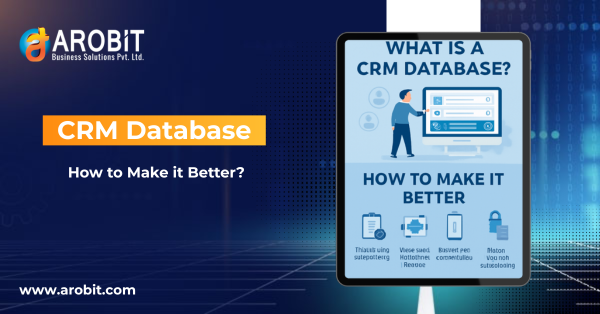In recent years, IT outsourcing has emerged as a way for businesses to save on costs, improve efficiency, and access specialized skills. According to a 2025 report from Gartner, over 70% of companies worldwide are outsourcing at least part of their IT operations; this year the global IT outsourcing market is expected to reach $450 billion. These advantages of outsourcing IT services notwithstanding, there exist several risks that need to be addressed by organizations so that such services are successful.
Knowing what risks lie ahead of actually commissioning IT outsourcing services is critical. From data safety concerns to unforeseen costs, businesses must have mud-probing strategies to combat possible issues. This piece traces the unnoticed risks related to IT outsourcing and how to best be sidestepped.
1. Data Security and Privacy Concerns
Risk:
- Data breaches, unauthorized access, and cyber threats.
- Compliance with GDPR, HIPAA, and other related laws.
- The penetrability of sensitive company data while dealing with offshore IT outsourcing vendors.
Mitigation:
- Adopt strict cybersecurity systems by implementing encryption, firewalls, and multi-factor authentication.
- All outsourcing vendors must sign NDAs (Non-disclosure Agreements) that will legally protect sensitive information.
- Select vendors based on compliance with regulatory considerations that follow industry standards.
- Do frequent audits on the managed IT service provider's security practices.
2. Loss of Control Over IT Operations
Risk:
- Over-dependence on third-party vendors.
- Transparency deficiency exists within the decision system.
- Difficulty in maintaining IT infrastructure without vendor support.
Mitigation:
- Develop clear Service Level Agreements (SLAs) to document responsibilities and expectations.
- Retain in-house oversight by retaining the most critical IT functions internally.
- Consider using hybrid outsourcing, retaining key operations within the company yet using external IT outsourcing solutions for all other peripheral functions.
3. Hidden and Unexpected Costs
Risk:
- Additionally, unknown costs on account of software upgrades, support, and changes in the contract.
- Very expensive would-be contractual termination penalties.
- High switching cost to be borne when changing outsourcing partners in IT.
Mitigation:
- Clearly state the terms of the contract so there are no vague clauses leading to unforeseen expenses.
- Transparency in pricing with itemized costing.
- The agreement should be reviewed regularly for viability.
- Collaborate with top IT outsourcing companies from India, which offer competitive pricing and good degrees of flexibility.
4. Quality and Performance Issues
Risk:
- Low quality of service and delayed delivery.
- No innovation from the vendor.
- Impending business-specific IT needs.
Mitigation:
- Conduct thorough vendor due diligence before signing agreements.
- Establish key performance indicators to measure vendor performance.
- Performance monitoring through real-time service monitoring tools.
- Engage IT consulting services to ensure the strategic alignment of business goals with IT outsourcing services.
5. Communication and cultural barriers
Risk:
- Lack of communication due to language barriers.
- Difficulty in collaboration is caused by the differences among time zones.
- Cultural dissimilarities that could influence work ethics and expectations.
Mitigation:
- Build effective communication channels, including Slack, Microsoft Teams, or Zoom.
- Conduct regular meetings to align expectations toward the project.
- Select offshore IT outsourcing vendors that have experience working in a global collaboration.
- Detailed documentation and Standard Operating Procedures (SOPs) can be used to eliminate misunderstandings.
6. Vendor Lock-in and Dependency:
Risk:
- Inability to switch vendors because of the proprietary systems;
- Long-term contracts bind flexibility;
- Lack of a backup solution should the vendor go down.
Mitigation:
- Select vendors that support open-source solutions to safeguard flexibility.
- Incorporate exit strategies into contracts to allow for smooth transitions.
- Retain control of critical data and systems to minimize dependency.
7. Legal and Compliance Risks
Risk:
- Non-compliance with data protection and IT regulations.
- Legal disputes over breaches of contract.
- Intellectual property (IP) risks when outsourcing software development.
Mitigation:
- Partner with vendors that have complied with international IT compliance standards.
- Consult legal experts before executing outsourcing agreements.
- Keep IP protection clauses to protect the business assets.
FAQs
Q1. What are some of the key risks associated with IT outsourcing?
A1. These include data security breaches, loss of control over IT operations, hidden costs, quality issues, communication barriers, vendor lock-in, and legal compliance challenges.
Q2. How does a company protect its data when outsourcing IT services?
A2. Companies should implement strong cybersecurity protocols, sign NDAs and SLAs, ensure compliance with data protection laws, and work alongside vendors that comply with best security practices.
Q3. How can a company prevent hidden costs in IT outsourcing?
A3. Companies can eliminate hidden costs by spelling out the pricing structure within the confining four corners of the contract, scrutinizing the SLAs thoroughly and demanding transparency on added service charges before the agreement is ultimately reached.
Conclusion
Outsourcing IT services surely brings with it varied benefits, but mainly involves cost savings and increased operational efficiency. However, it is important to be aware of the hidden risks that always accompany IT outsourcing services. Organizations must mitigate challenges like data security threats, hidden costs, performance issues, and vendor dependency.
The complexities of IT outsourcing can be effectively resolved with the use of strong security features, clearly defined contracts, metrics for measuring performance, and the right IT outsourcing partnerships. While the choice of provider is still in effect, working with top IT outsourcing companies in India can help deliver high-quality managed IT services in compliance with transparency.
Ultimately, when IT outsourcing is done right, it can turn into the most effective weapon in the arsenal of organizations through strategic planning, risk management, and strengthening vendor relationships. Organizations may leverage consulting services to draw out innovation and growth for chronic sustainability through effective risk reduction.








